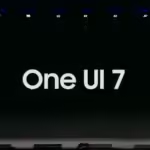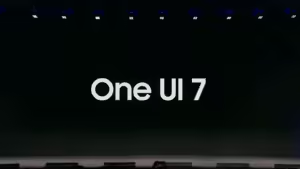
How To Boost Your SEO With Long-Tail Keywords?
📋 Table of Contents
- What Are Long-Tail Keywords?
- Why Long-Tail Keywords Matter for SEO Success 🧩
- Types of Long-Tail Keywords 🛠
- Benefits of Long-Tail Keywords ✅
- Cons of Long-Tail Keywords ⚠️
- How to Find Long-Tail Keywords 🚀
- How to Use Long-Tail Keywords Effectively
- Role of Keywords in Ranking and SEO Performance 🥇
- Conclusion: Why You Should Focus on Long-Tail Keywords
📌 What Are Long-Tail Keywords?
Long-tail keywords refer to specific, detailed search queries containing three or more words. These phrases target precise topics, making them highly relevant to user intent. They’re named “long-tail” because their search frequency forms a long tail in a keyword graph, representing numerous niche queries with low search volume but high intent.
For example, instead of using the broad keyword “smartphone,” a long-tail keyword would be “best Android smartphone under 300 dollars 2024.” These phrases appeal to searchers looking for specific answers, making them a vital part of SEO success.
🧩 Why Long-Tail Keywords Matter for SEO Success

Targeting long-tail keywords is critical because Google’s search algorithm prioritizes relevance and intent. With over 8.5 billion searches per day, most users aren’t typing short queries. Instead, they search with questions or detailed phrases, often looking for precise solutions. Optimizing your website for these queries improves your content’s relevance, which boosts your site’s position in search engine rankings.
Incorporating keywords naturally across headings, meta descriptions, and internal links also improves discoverability. With long-tail keywords, websites attract more targeted traffic, leading to higher engagement and conversion rates.
🛠 Types of Long-Tail Keywords
1. Informational Keywords
These keywords cater to users seeking knowledge or solutions.
Example: “How to improve SSD performance on a MacBook”
2. Navigational Keywords
These are used when searchers intend to navigate to a specific brand or product.
Example: “Apple official store MacBook Air purchase”
3. Transactional Keywords
These keywords indicate the user’s intention to buy or act.
Example: “Best SSD laptop under $1000”
Using a blend of these keyword types enhances your content strategy by capturing visitors at different stages of the purchase funnel.
✅ Benefits of Long-Tail Keywords
🎯 1. Increased Search Engine Visibility
By using long-tail keywords, your site becomes more relevant to search engines, boosting SERP visibility. Google values specific, well-targeted content.
🚀 2. Easier to Rank with Lower Competition
Unlike broad terms, long-tail keywords face less competition, making it easier to secure a higher position on search engines.
📊 3. Enhanced Conversion Rates
Users searching with long-tail phrases are closer to taking action, leading to better conversions.
Example:
A visitor searching “buy 2TB SSD for gaming” is more likely to purchase than someone searching “SSD.”
⚠️ Cons of Long-Tail Keywords
- Lower Individual Search Volume: Long-tail keywords don’t bring large amounts of traffic in one go.
- Requires More Content: You’ll need to create more pages or posts targeting each keyword to cover various niches.
- Time-Consuming Research: Finding the right long-tail keywords involves careful analysis and testing.
🚀 How to Find Long-Tail Keywords
1. Use Keyword Research Tools
- Google Keyword Planner: Identify relevant long-tail keywords with low competition.
- Ubersuggest: Get keyword suggestions based on real user searches.
- AnswerThePublic: Discover questions that people frequently ask related to your niche.
2. Analyze Competitor Websites
Use SEMrush or Ahrefs to analyze competitor content and discover keyword gaps that you can target.
3. Explore Search Engines Directly
- Google Autocomplete: Type in part of a query to find trending long-tail phrases.
- People Also Ask Boxes: Extract user queries to enhance your content.
💼 How to Use Long-Tail Keywords Effectively
- Place Keywords Naturally in Titles and Headings
Avoid overstuffing keywords—place them naturally in H1 and H2 tags to maintain readability. - Optimize Meta Descriptions and URLs
Include long-tail keywords in meta descriptions and URLs to improve click-through rates. - Cluster Content Topics
Create content clusters where pillar pages cover broad topics and individual posts focus on specific long-tail keywords.
🥇 Role of Keywords in Ranking and SEO Performance
- Improved Relevance for Google Crawlers: Long-tail keywords help Google understand your content’s purpose better.
- Enhanced User Experience: Visitors stay longer on pages optimized with the right keywords, improving engagement.
- Better Internal Linking Opportunities: Use long-tail keywords as anchor text to create SEO-friendly internal links across your site.
🌐 SEO Tools for Finding Long-Tail Keywords
- SEMrush: Helps you identify keyword opportunities and track rankings.
- Ahrefs: Uncovers competitor keywords and content gaps.
- Moz Keyword Explorer: Provides keyword difficulty scores and insights.
- Google Trends: Analyzes keyword popularity over time.
🎯 Conclusion: Why You Should Focus on Long-Tail Keywords
In today’s competitive SEO landscape, long-tail keywords offer a practical and sustainable way to rank higher, drive targeted traffic, and improve conversion rates. Though they require consistent effort to research and implement, their rewards far outweigh the challenges.
By targeting these niche queries, you can dominate search results, enhance user engagement, and achieve long-term SEO success. With the right blend of tools, content strategies, and internal links, long-tail keywords become the key to unlocking powerful organic growth.
💡 Ready to take your SEO strategy to the next level? 🎉
Optimize your content with long-tail keywords today and watch your rankings soar! 🚀
This ultimate guide has given you everything you need to know about long-tail keywords. Whether you’re using them for content marketing, local SEO, or voice search optimization, targeting long-tail keywords is essential for sustainable success. Use these tips and tools, and you’ll be on your way to SEO domination!
























Post Comment